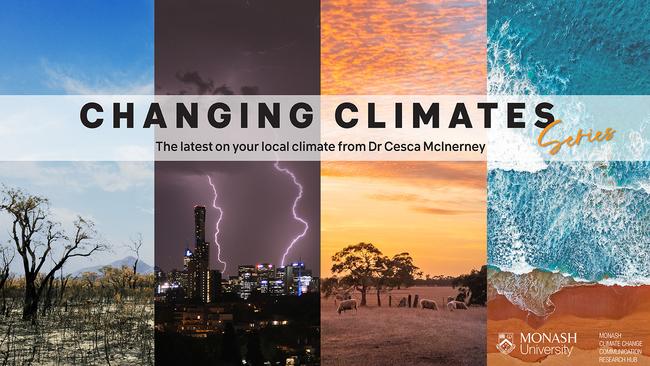Waving beaches goodbye as sea levels rise
Host of Adelaide's Changing Climates series, Dr Cesca McInerney, explains how July days are heating up. Plus, a look at the influence of warming on sea level rise.

HyperLocal
Don't miss out on the headlines from HyperLocal. Followed categories will be added to My News.
More than 80 per cent of Australia's population live within 50km of the coast, showing just how much Aussies love the beach.
However, climate change has been driving a rise in sea levels since the late 1800s and washing away parts of our precious and pristine coastlines.
The main cause of this sea level rise is increasing global temperatures from excessive greenhouse gas emissions.
We're seeing this warming in Adelaide.
Our hottest July day now sits at 20.9C – that's 1.9C warmer than the early 1970s.

Climate change and sea level rise:
Warmer temperatures have been rapidly melting polar ice sheets and glaciers, which has contributed to around two-thirds of the sea level rise in the last few decades.
The other third comes from thermal expansion.
This is a process where the ocean soaks up much of the additional heat from our atmosphere, causing the water to expand.
As a result, we expect the rate of sea level rise to accelerate throughout this century.
Coastal cities including Adelaide will likely see an average increase of 12cm by 2030 under a medium greenhouse gas emissions scenario, compared to the 1990s.
Impacts of a rising tide:
Most of our major centres are situated on the coast, exposing many communities to the crippling consequences of sea level rise.
Coastal regions face the risk of more severe storm surges and floods as a result of higher sea levels.
The potential replacement cost of homes and other infrastructure is projected to be in the tens of billions, and many buildings in other areas are likely to become uninsurable.
In addition, Australia could lose up to 50 per cent of its beaches over the next 80 years, delivering a severe blow to our cultural identity, as well as our coral reefs and tourism industry.
Saving our beloved coastlines requires us to find novel solutions to rising sea levels.
The best form of mitigation is to reduce our greenhouse gas emissions and curb warming.
We can also help by expanding 'green' infrastructure like coastal wetlands, mangrove forests and reefs.
Investing in these natural resources is cheaper, provides better flood protection and lasts longer than human-engineered infrastructure like sea walls.
These adaptations remove carbon from the atmosphere, improve water quality for coastal communities, and boost recreational tourism.
Did you know?

Want more information on how your climate is changing? Check out the last article in this series.
Dr Cesca McInerney is a visiting research fellow at the University of Adelaide and senior research fellow with the University of Queensland.
This column is part of a collaboration between Monash University and News Corp to deliver hyperlocal weather and climate information.

